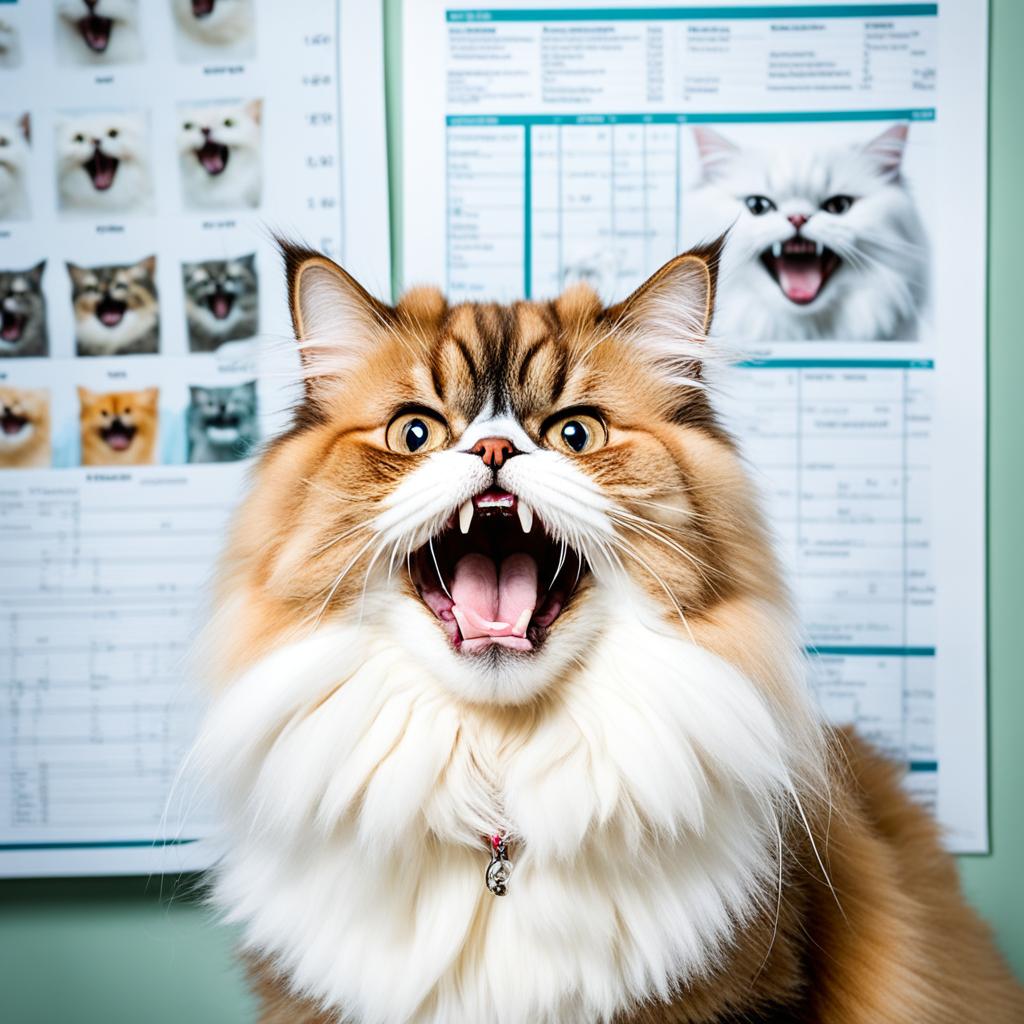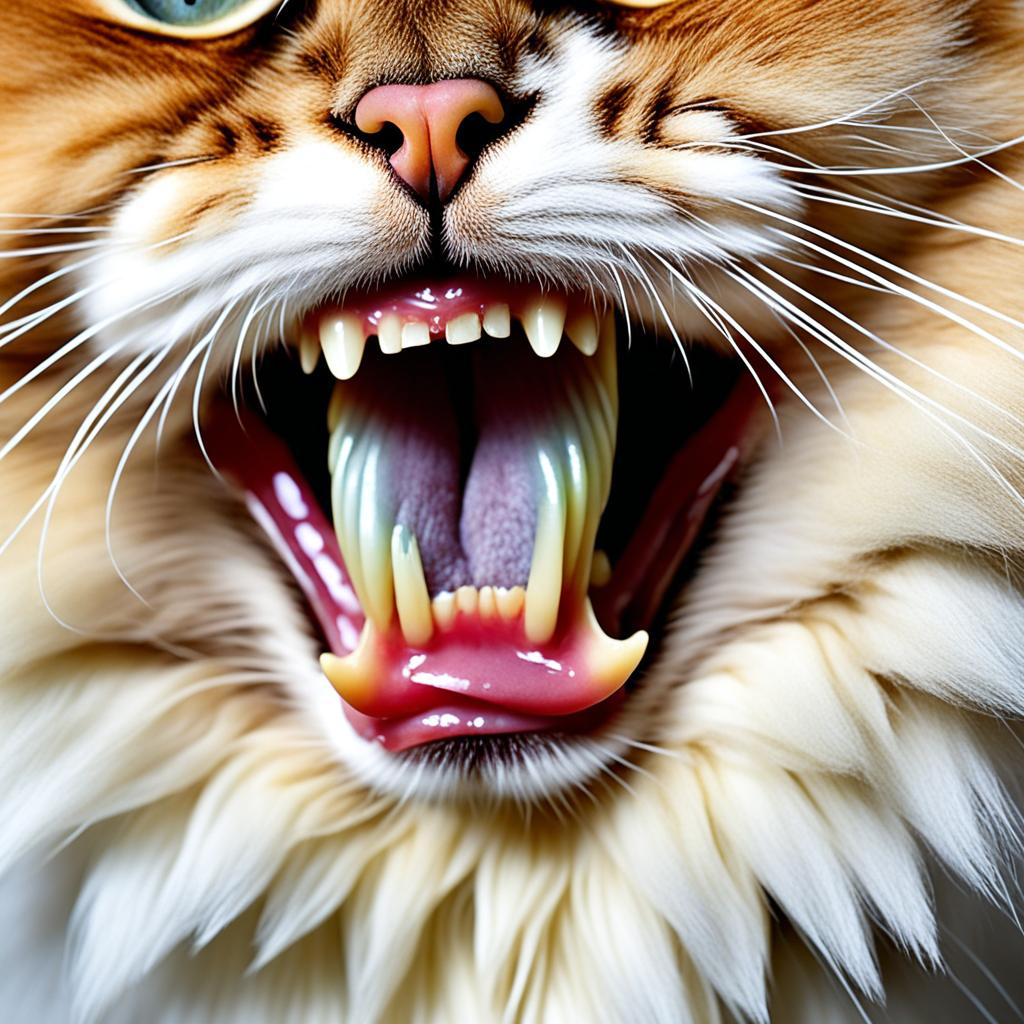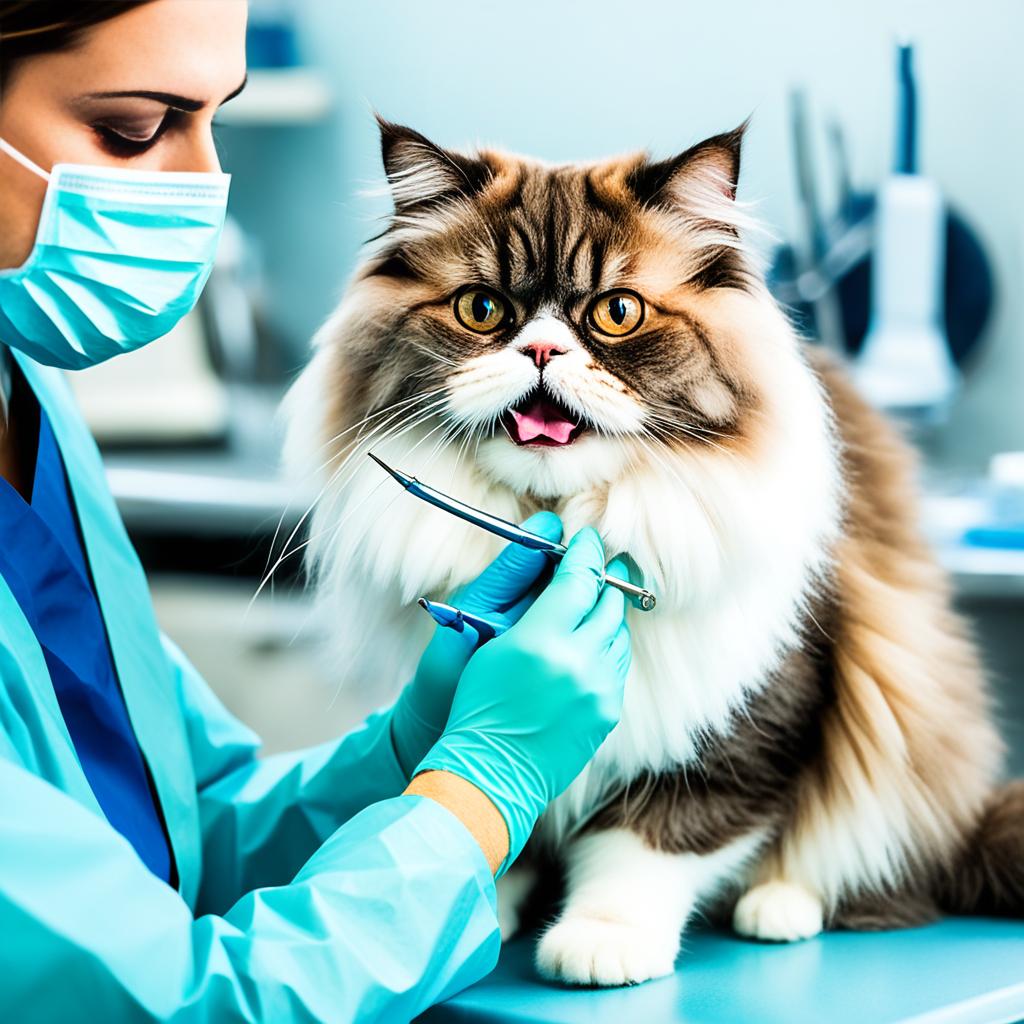Did you know that many Persian cats have dental diseases? A study by the Royal Veterinary College and the University of Edinburgh found this. About 11.3% of Persians face these issues.
This number shows how much these cats struggle. They are loved for their beauty and flat faces. Their flat faces, called brachycephalic, not only cause breathing problems but also dental ones. Dr. Dan O’Neill noted the welfare issues. Prof. Gunn-Moore from the University of Edinburgh calls for changes in how we breed them.
These cats have long, thick fur and unique faces. This makes caring for them a bit harder. In the UK, there are around 100,000 of these special cats. This information is key for those who breed, take care of, or treat them for health issues.
Key Takeaways
- A significant 11.3% of Persian cats suffer from dental diseases.
- The flat-faced structure of Persian cats contributes to their dental issues.
- Experts emphasize the need for breeding reforms to address health concerns.
- Their thick and long coat adds to the complexity of their health challenges.
- Preventive care is essential for managing the dental health of Persian cats.
Introduction to Persian Cats’ Dental Health

Persian cats have a calm nature and famous flat faces. But these features make them more likely to have dental and health issues. It’s key for pet owners to know about Persian cats dental health.
The flat face of a Persian cat plays a role in their dental problems. This face shape can make their teeth not line up well. Then, they might have more issues with their gums. So, dental care for Persian cats is very important.
Owners need to watch their Persian cats’ teeth closely. Dental problems can cause big health issues and expensive vet visits. Knowing about Persian cats’ dental problems helps owners keep their cats’ mouths and health in top shape.
“Regular dental check-ups and at-home care are fundamental for preserving the health of Persian cats. Owners need to be proactive in their approach to Persian cats dental health, ensuring their feline friends lead comfortable and healthy lives.” – Dr. Jane Williams, Veterinary Dental Specialist
Learning about Persian cats’ dental issues helps pet owners provide the best care. This knowledge can make their cats’ lives happier and healthier.
Why Are Persian Cats Prone to Dental Problems?

Persian cats have a unique and appealing look. However, they often have dental problems. This is because of several reasons.
Anatomical Factors
Their anatomy is a big reason for their dental issues. Persian cats have a short jaw. This leads to crowded or misaligned teeth, causing more periodontal disease.
Their flat faces also cause problems. It’s hard for them to chew food well. This adds to the Persian cat oral issues.
Genetic Predispositions
Genetics also play a role in Persian cat oral issues. Their long facial hair can trap food and bacteria. This makes their dental problems worse.
Persian cats inherit certain tooth and gum health issues. So, they are more at risk than many other cat breeds.
Common Symptoms of Dental Issues
It’s important to catch dental issues early. Look out for bad breath, trouble eating, and tartar on the teeth. If you see these signs, it’s time for a vet visit.
The Most Common Dental Issues in Persian Cats

Persian cats often face dental problems. These can lead to pain and even health issues if not handled quickly. This includes bad breath, loose teeth, or swollen gums.
Periodontal Disease
Periodontal disease is a big worry for Persian cats. It starts with gum inflammation, can damage the structures supporting teeth. Be cautious if your cat has bad breath, loose teeth, or gum swelling.
Gingivitis
Left unchecked, gingivitis can lead to worse issues. You’ll notice red, swollen gums that might bleed. Good, routine dental cleaning can help stop gingivitis.
Tooth Resorption
Tooth resorption is quite painful. It involves the body breaking down and absorbing the tooth. Since it affects the root, it’s hard to spot without a vet. Regular checks are vital to catch and treat problems early.
It’s crucial to spot and fix dental issues early in Persian cats. Regular vet visits for dental checks are a must. Along with good home care, this can keep your cat’s teeth and gums healthy.
Preventing Dental Problems in Persian Cats

Looking after a Persian cat’s teeth is key to their overall health. A dental care for Persian cats plan can stop big oral health issues. It’s all about regular care and a watchful eye.
Brush your cat’s teeth often with special cat toothpaste. This removes food bits and keeps plaque away, stopping tartar and gum diseases. Also, choose a diet and toys that are good for their teeth to boost their oral health.
Don’t skip trips to the vet for dental check-ups. This is crucial for early spotting and fixing tooth problems. Vets can clean your cat’s teeth well and give you advice just for them. Knowing and doing these steps will help keep your cat healthy and happy.
To summarize, here are the main steps for preventing dental problems in Persian cats:
| Preventive Measures | Benefits |
|---|---|
| Regular Brushing | Removes plaque, prevents tartar buildup |
| Dental-friendly Diet and Toys | Promotes chewing, reduces plaque |
| Routine Veterinary Check-ups | Early detection and treatment of dental issues |
Conclusion
It’s important to understand why Persian cats often have dental problems. They are more at risk due to their special body design and genes. Knowing the signs and common issues, you can quickly help your cat’s oral health.
Preventing dental problems in Persians requires good oral care. This includes regular brushing with the right toothpaste, giving them dental-friendly food and toys, and seeing the vet often. These steps lower the chance of dental issues for your Persian cat.
Knowing your Persian cat’s dental care needs helps keep them in good health. With careful and educated care, you can avoid dental problems. This means a happier, healthier life for your beloved pet.




